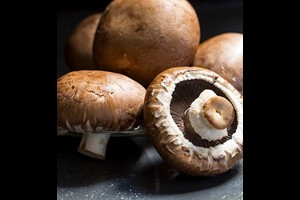3D printed food presents an intriguing frontier for innovation in the food industry, promising to revolutionize how food is prepared, personalized, and delivered. However, this technology faces substantial hurdles that must be addressed to realize its full potential. Understanding these challenges is essential for businesses considering the integration of 3D printed food into their operations. Here’s a comprehensive examination of the primary obstacles:
Scaling Up Production
Speed Constraints: 3D printers currently operate at a pace significantly slower than traditional food production methods. The process of printing complex dishes layer by layer is time-intensive, which could lead to impractically long wait times in high-demand settings such as fast-food restaurants. For instance, using a 3D printer to produce burgers in real-time during peak hours could result in unacceptable delays for customers.
Technical Limitations: Current 3D food printers face limitations in terms of the volume of material they can process and the number of printing heads available. These restrictions hinder the efficiency of producing large or intricate food items, posing a barrier to scaling up production to meet commercial demands.
Consumer Perception
Novelty and Trust: The concept of 3D printed food is still novel to many consumers, who may be hesitant to embrace unfamiliar technology. Overcoming this requires concerted efforts to build trust and clearly communicate the safety, benefits, and potential of 3D printed food. Ensuring transparency and educating the public about the process and its advantages are crucial steps in fostering acceptance.
Sensory Experience: Food consumption is a multisensory experience involving taste, texture, aroma, and visual appeal. Current 3D printing technology struggles to replicate these aspects to the same degree as traditional food preparation methods. For example, the intricate marbling and aroma of a steak fresh off the grill are challenging to reproduce with a machine, potentially impacting consumer satisfaction.
Nutritional Impact
Processed Ingredients: Many 3D printing techniques rely on pureed or otherwise processed ingredients, which can alter the nutritional profile of the final product. Nutrient degradation during processing and potential changes in nutrient availability due to the printing process are significant concerns that need addressing to ensure the healthfulness of 3D printed foods.
Limited Ingredient Diversity: The range of ingredients currently suitable for 3D printing is limited. This restriction complicates the creation of balanced and nutritious meals, as the technology struggles to incorporate diverse ingredients effectively. Expanding the variety of printable ingredients is essential for developing more comprehensive meal options.
Developing Diverse Textures
Technical Challenges: Achieving a wide variety of textures within a single 3D printed meal remains a significant challenge. Current printers often cannot handle the complexity required to produce textural diversity, such as combining crispy, soft, and crunchy elements in a single dish. This limitation impacts the overall eating experience.
Material Science Advances: Creating printable "inks" that accurately replicate the complex structures and textures of natural foods is an ongoing area of research. Advances in material science are needed to develop these inks, which are crucial for enhancing the realism and appeal of 3D printed foods.
Food Safety and Regulations
Safety Concerns: Introducing new technology into food production raises questions about potential safety risks. Ensuring that 3D printing processes do not introduce bacterial contamination during printing or storage is critical. Rigorous safety protocols and thorough research are necessary to mitigate these risks.
Regulatory Adaptation: The regulatory landscape for food safety and labeling needs to evolve to address the unique aspects of 3D printed food. This process can be slow and create uncertainty for businesses. Clear guidelines and standards specific to 3D printed food must be developed to provide a stable framework for industry growth.
Cost and Availability of Ingredients
Specialized Ingredients: 3D food printing often requires specialized ingredients or "inks" that are currently expensive to produce and may not be widely available. This increases the cost of 3D printed food, making it less competitive with traditional food production methods.
Limited Production Scale: As 3D printed food remains a niche market, the production scale for these specialized ingredients is limited, further driving up costs. Expanding production capacity and reducing ingredient costs are critical for making 3D printed food a viable option for broader market adoption.
While 3D printed food offers exciting possibilities for innovation in the food industry, significant challenges must be addressed to unlock its full potential. From scaling up production and improving consumer perception to enhancing nutritional profiles and navigating regulatory landscapes, each hurdle presents a unique obstacle. By understanding and addressing these challenges, businesses can better position themselves to leverage the benefits of 3D printed food technology.
foodHQ Staff











